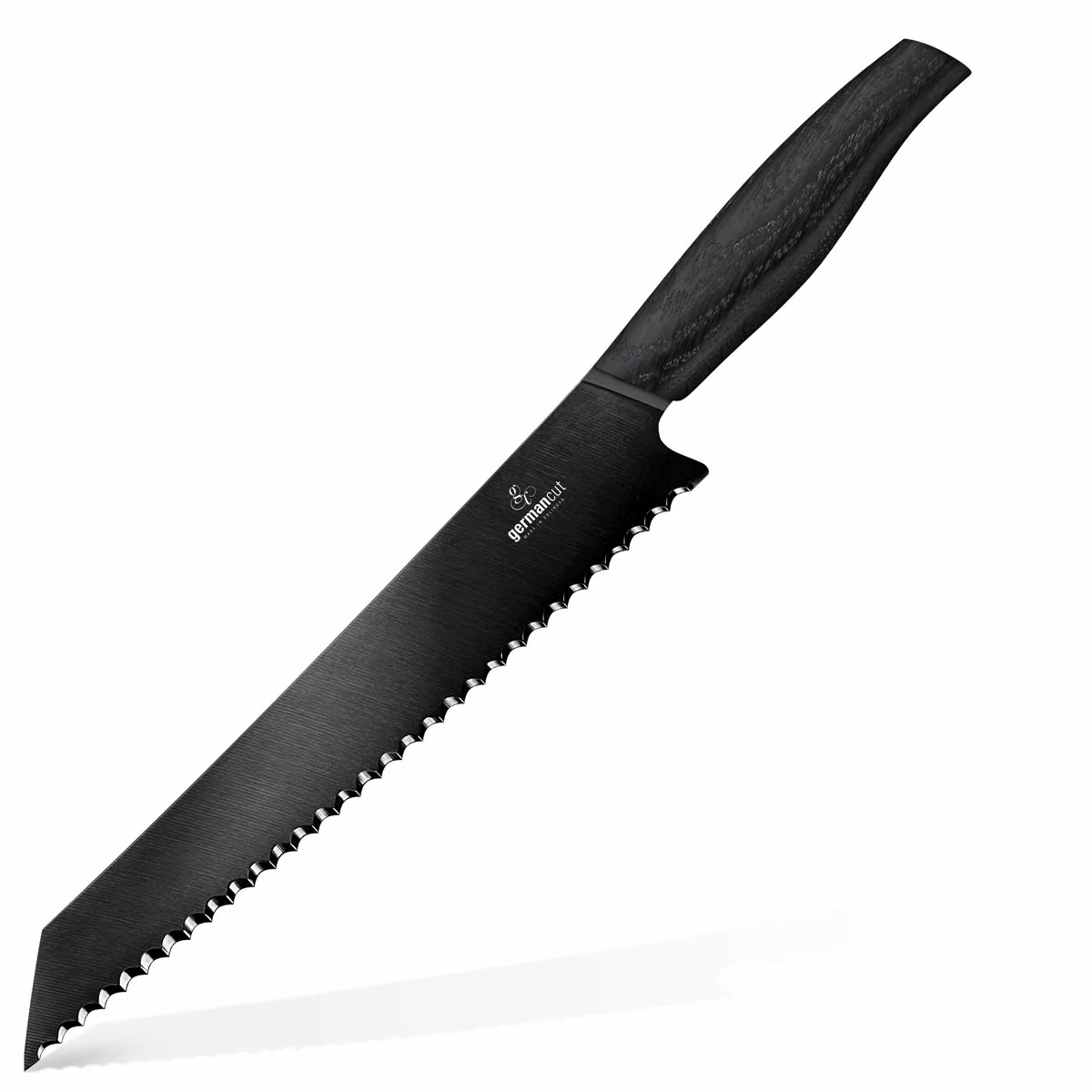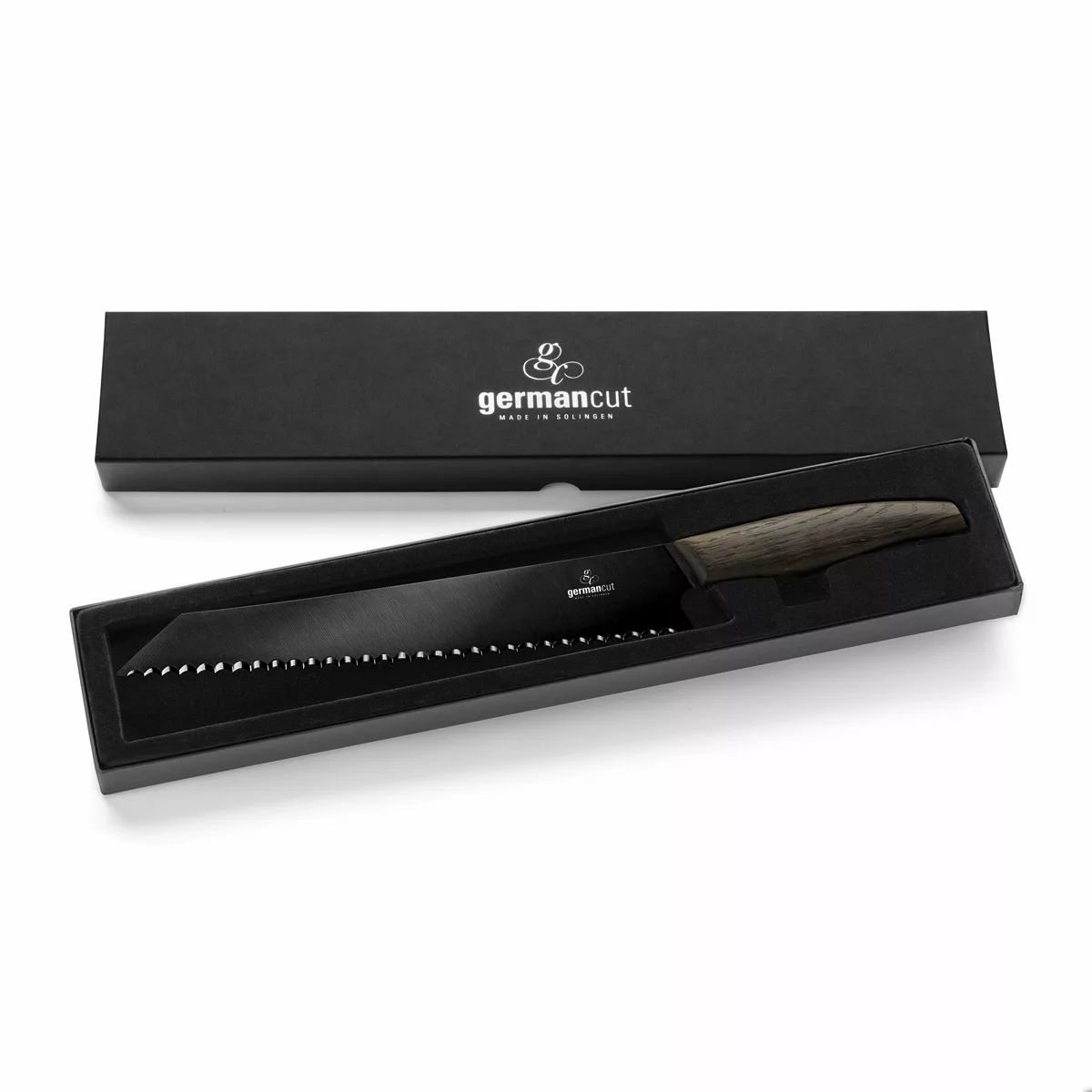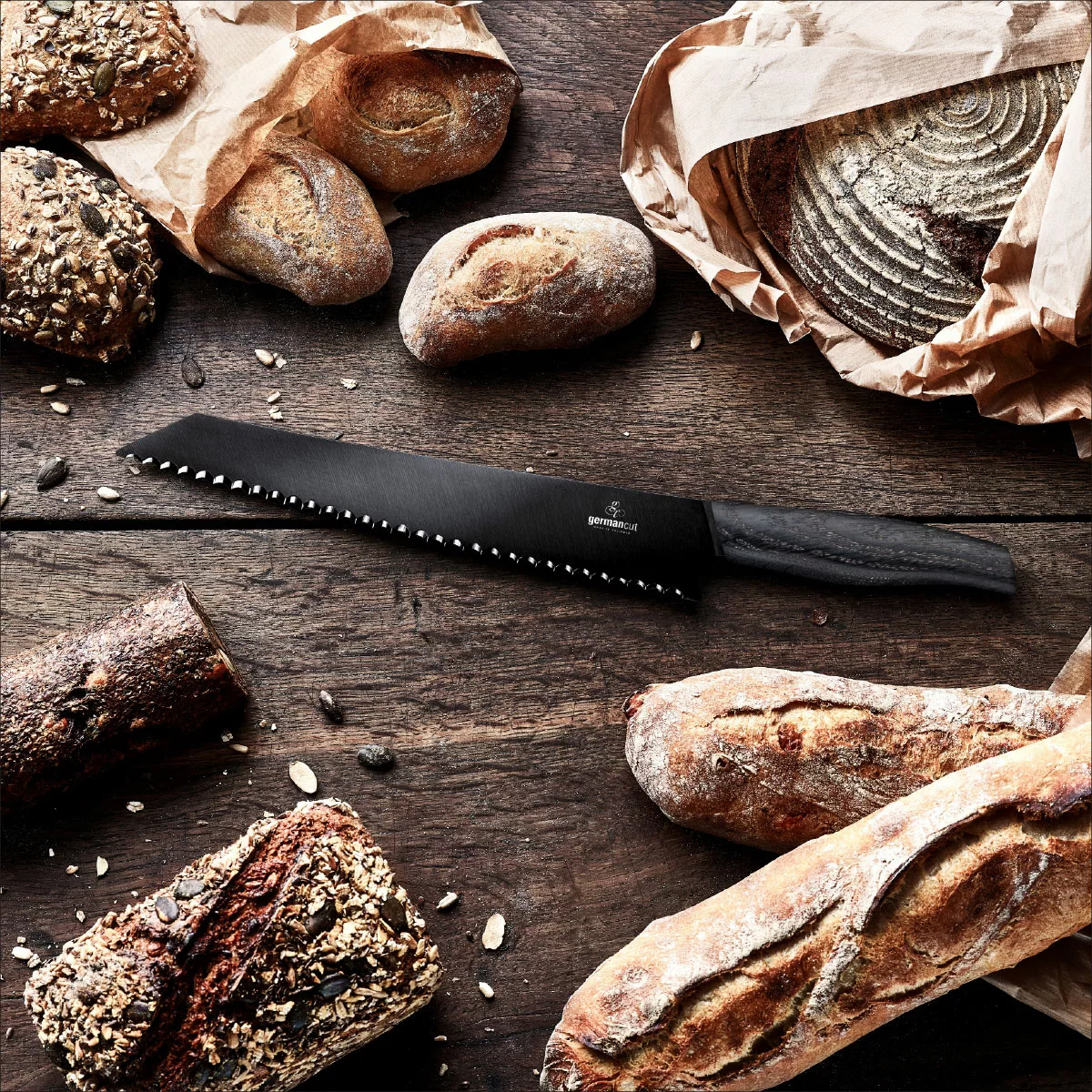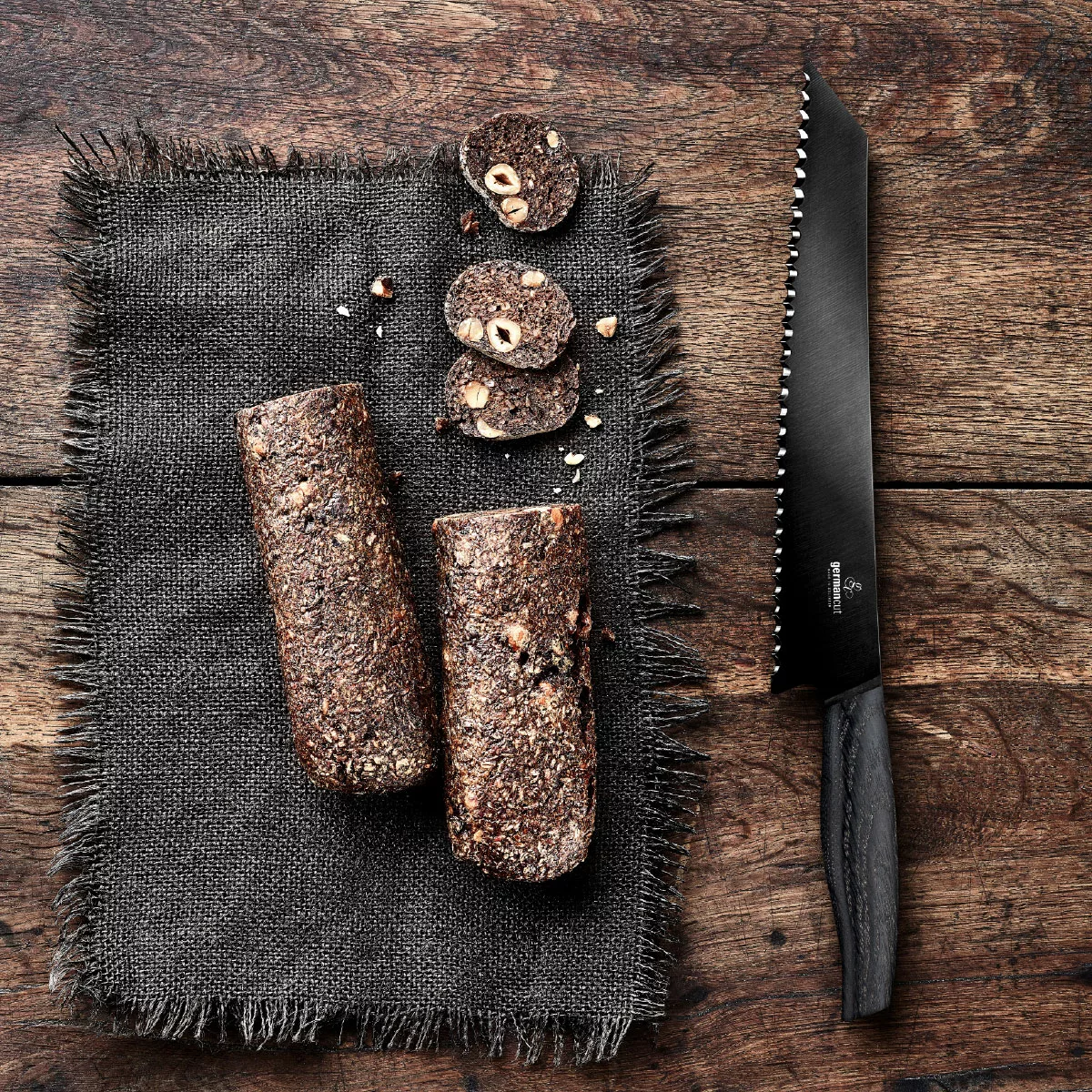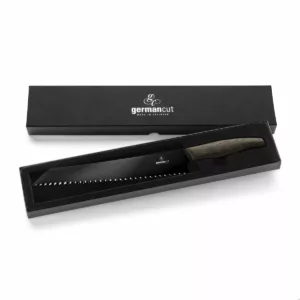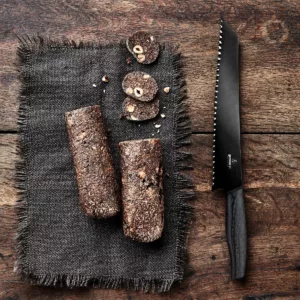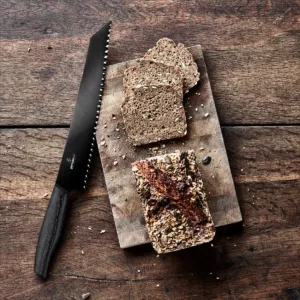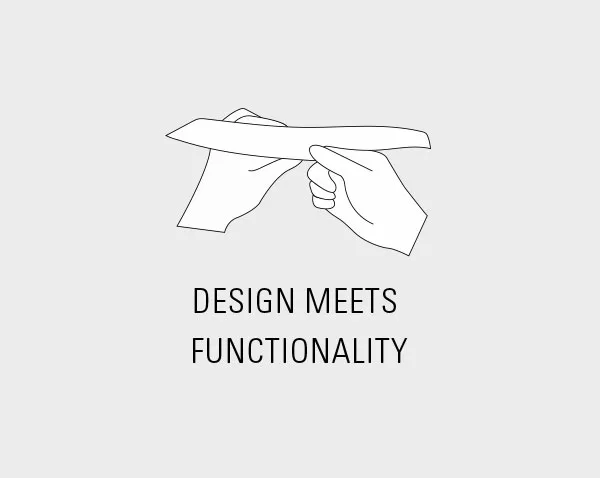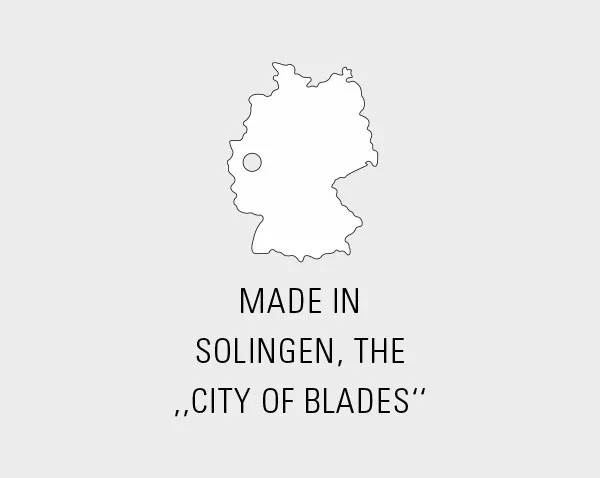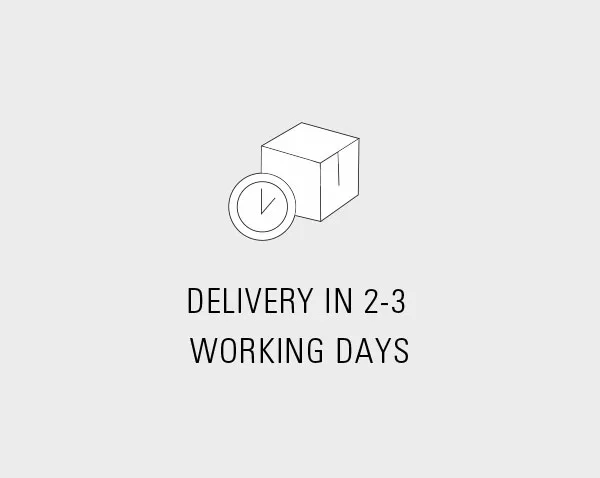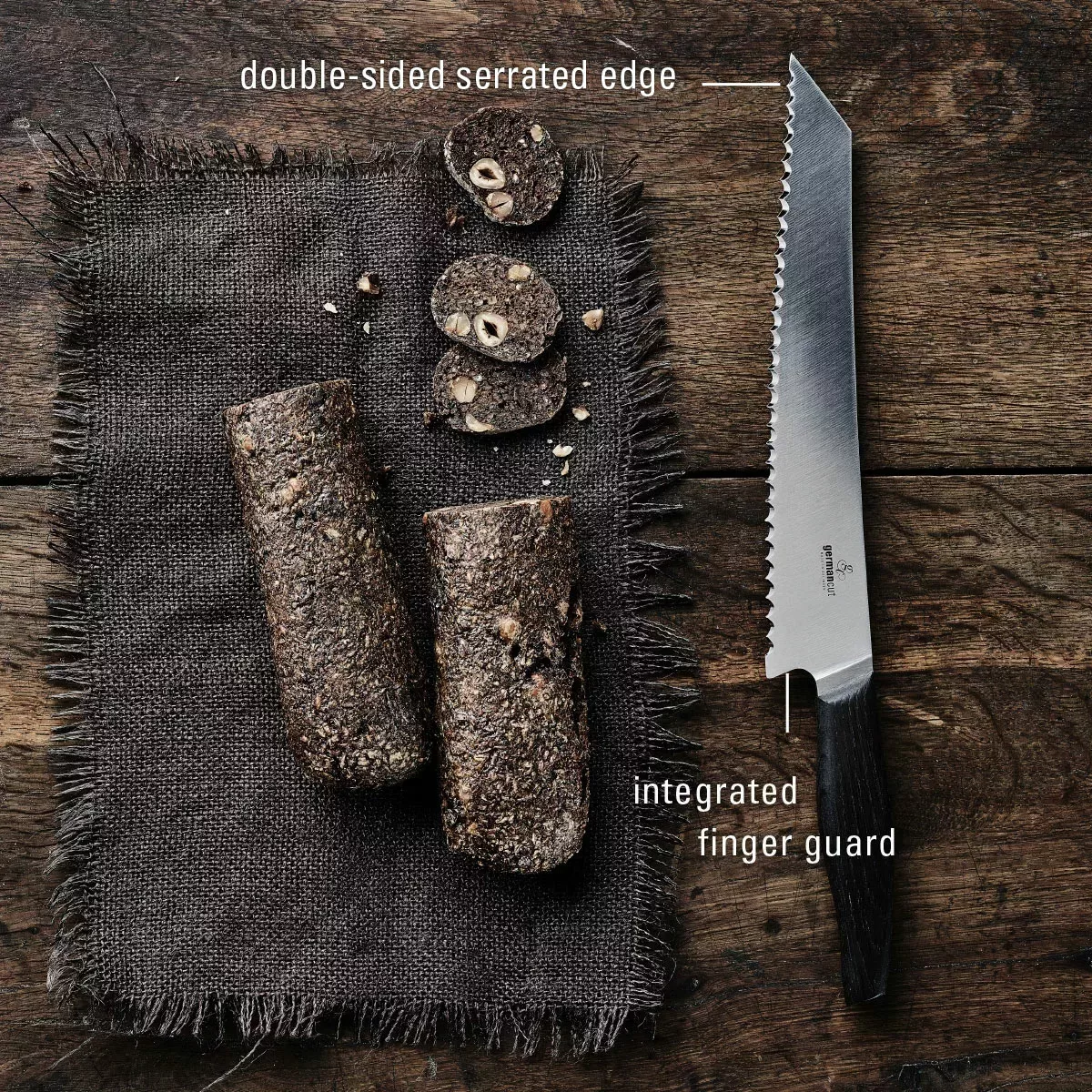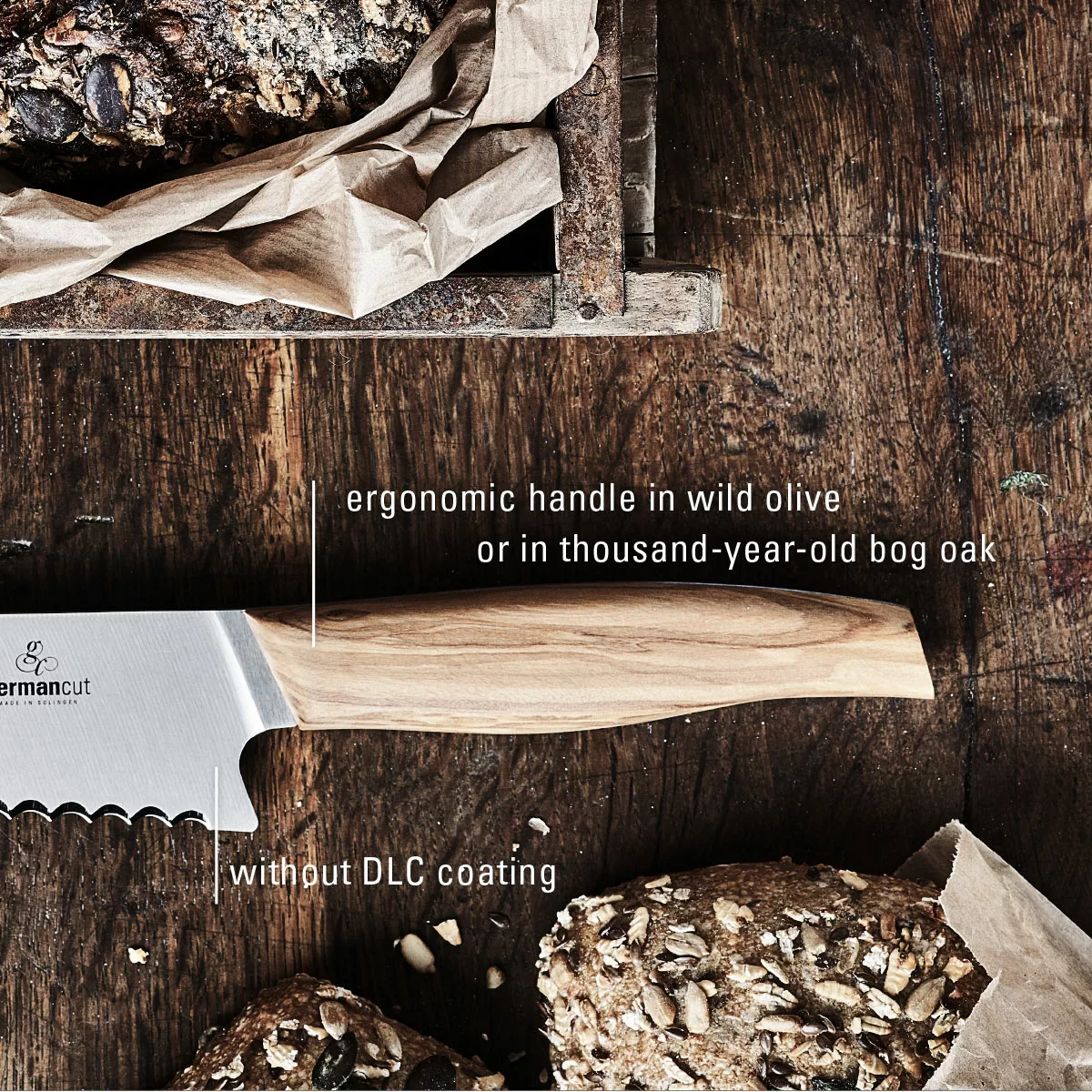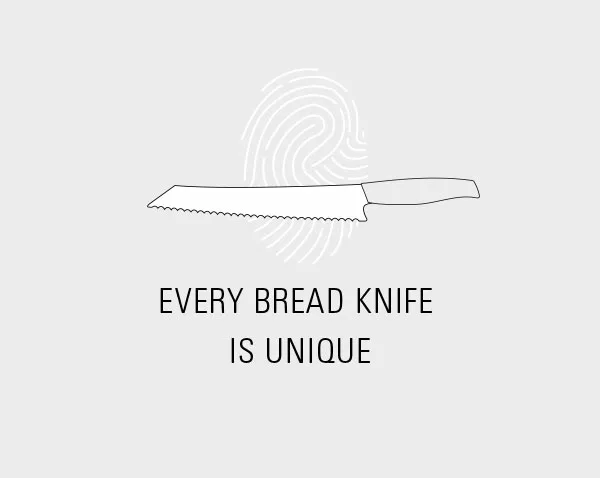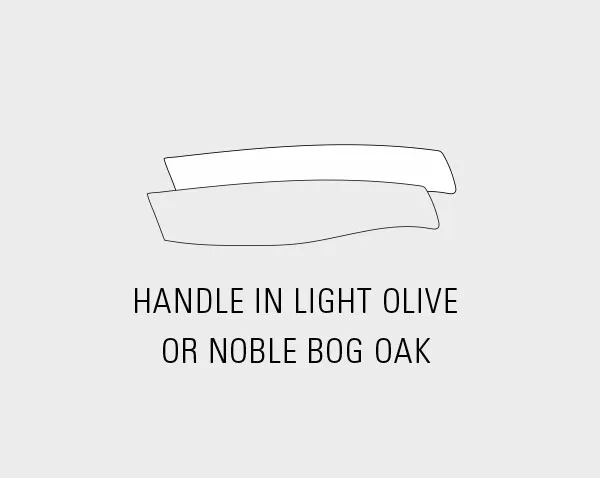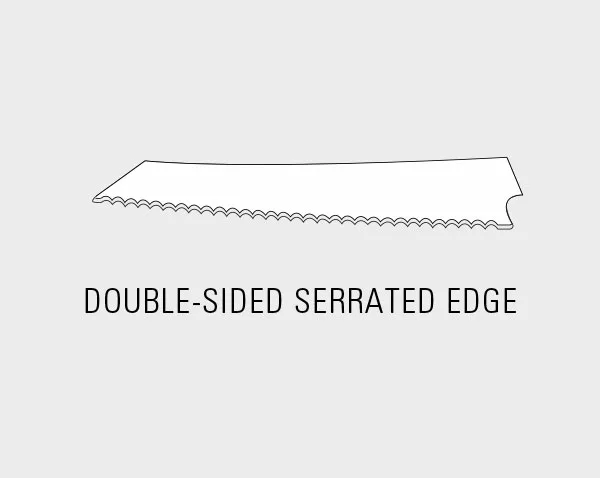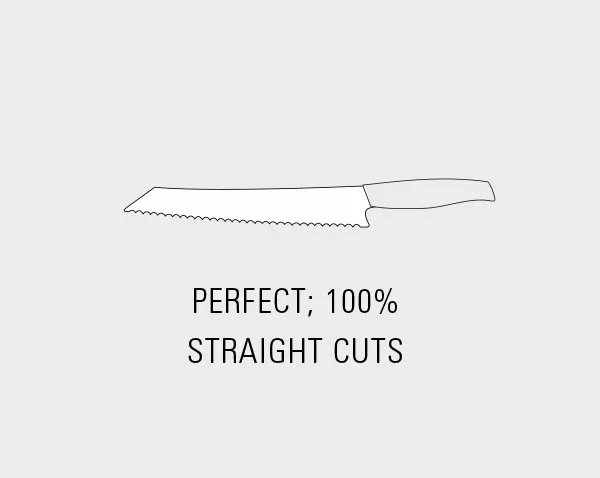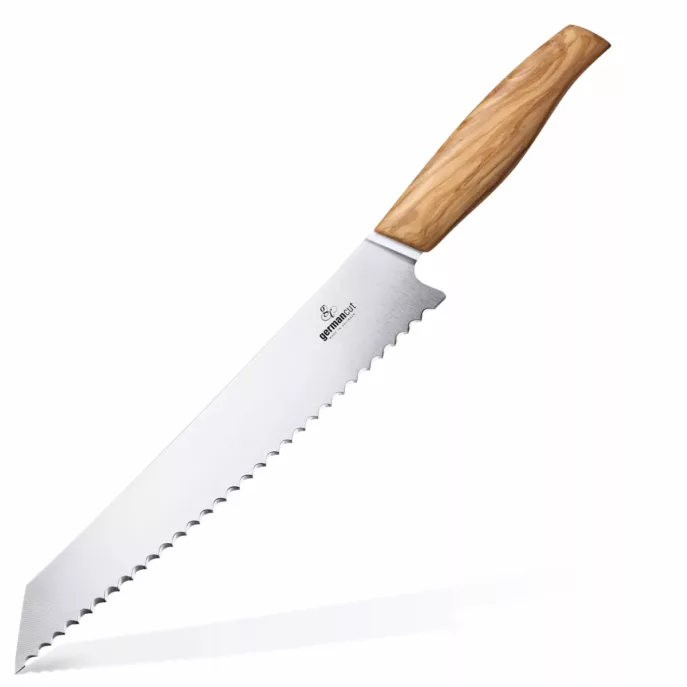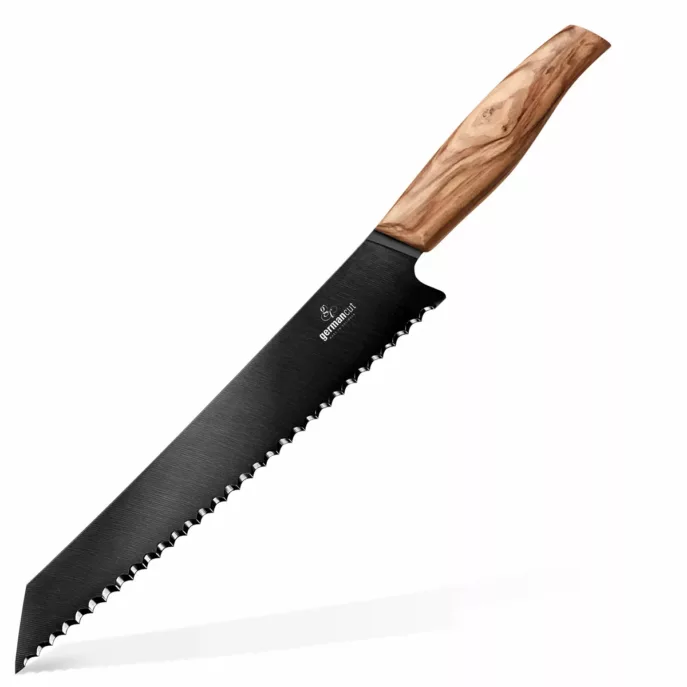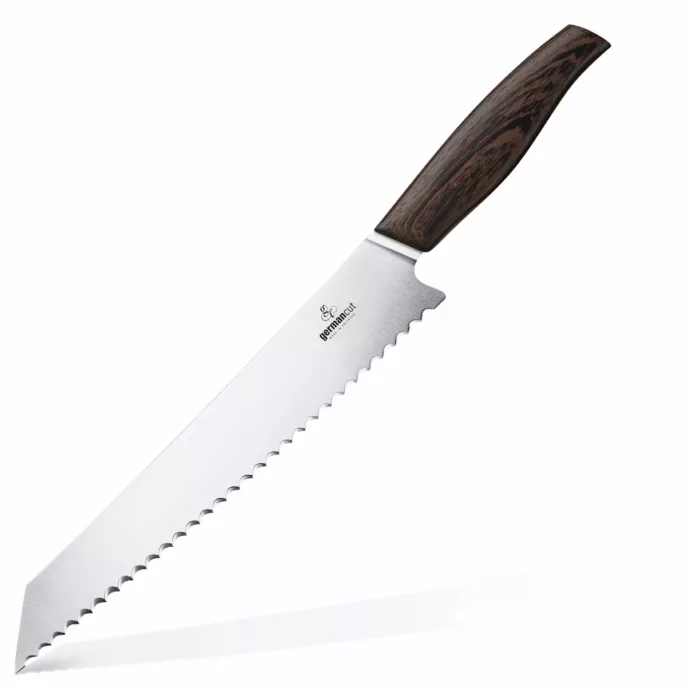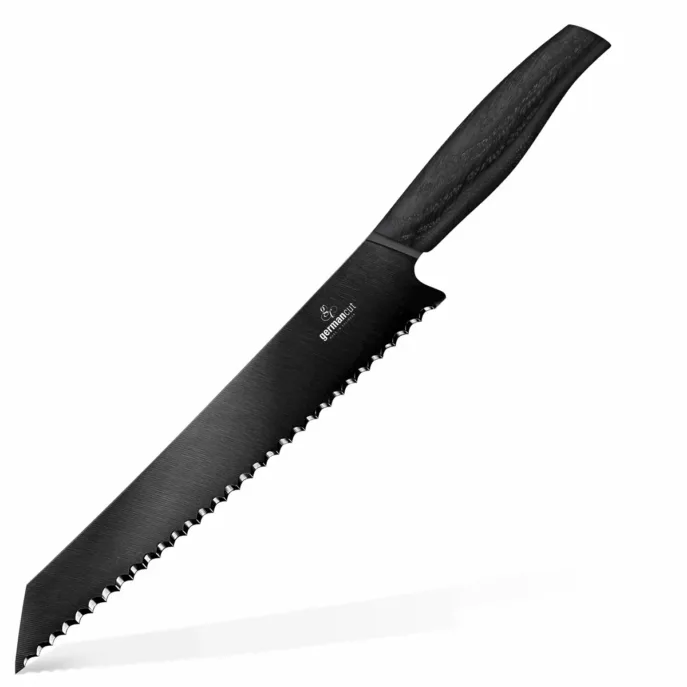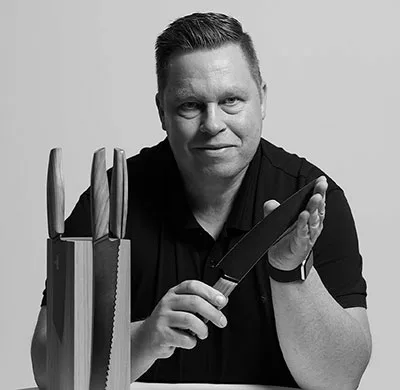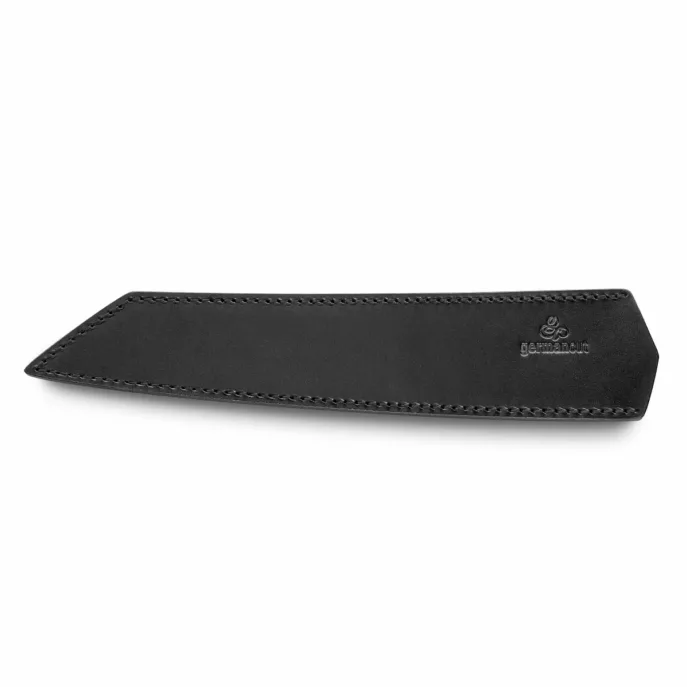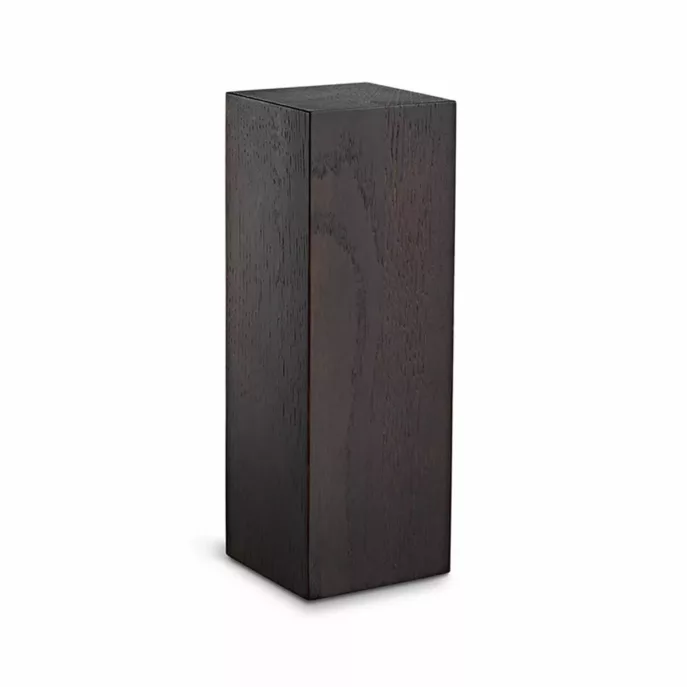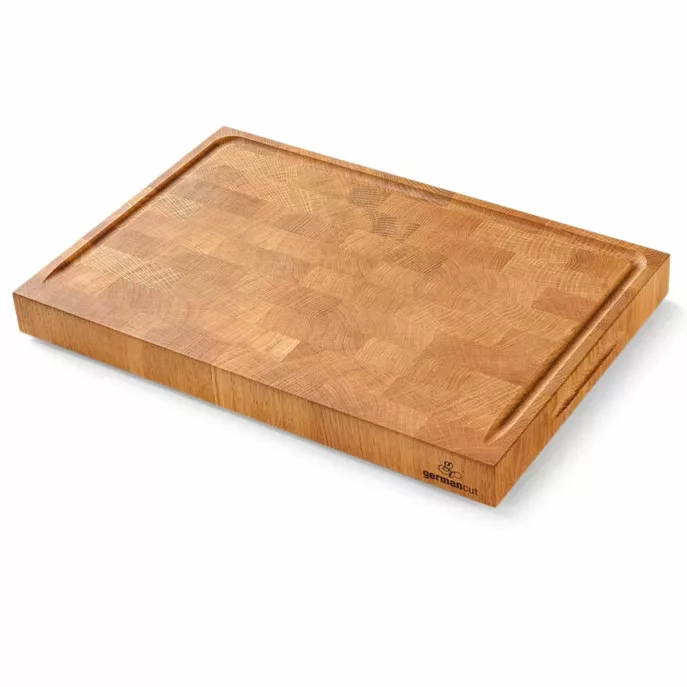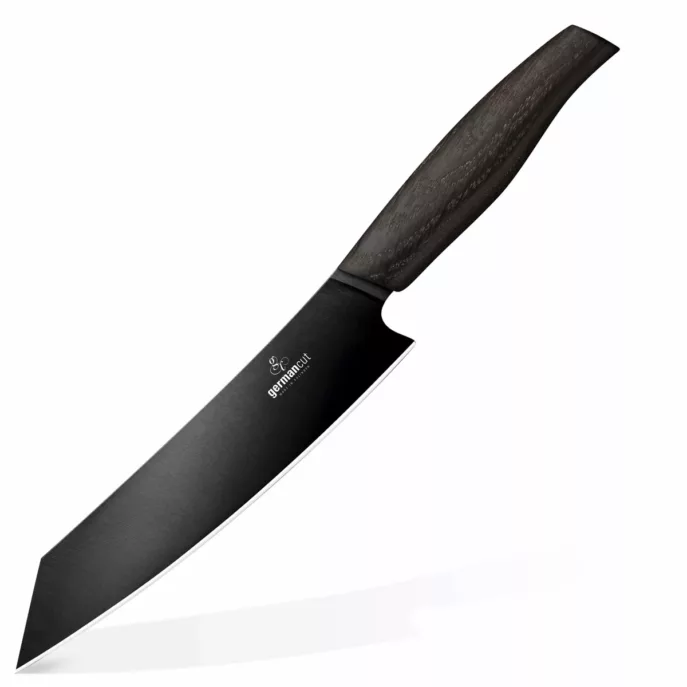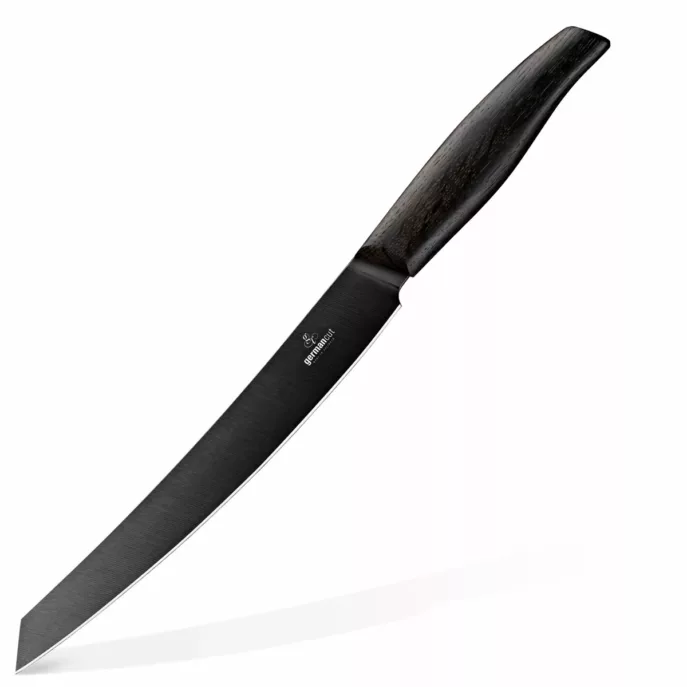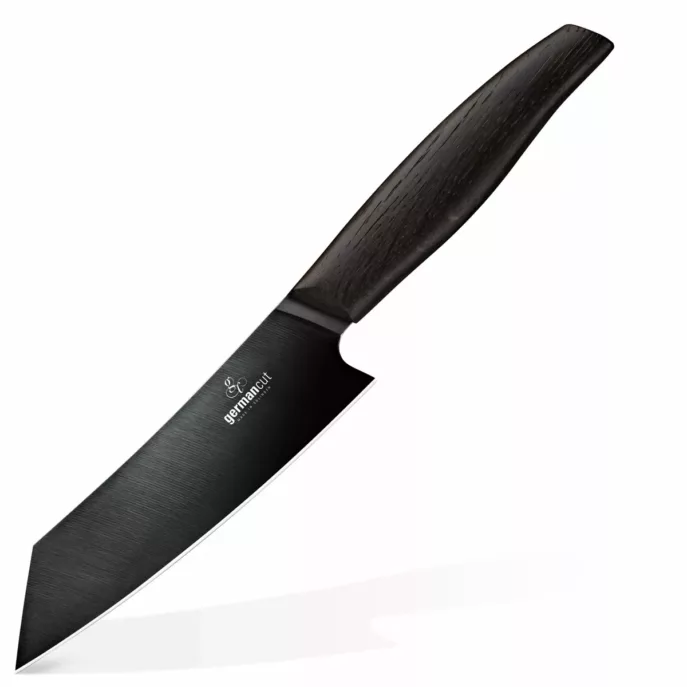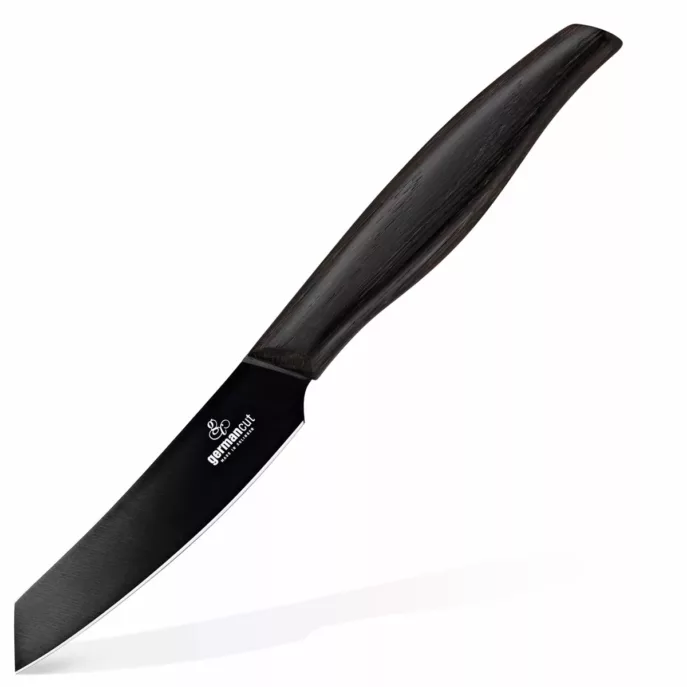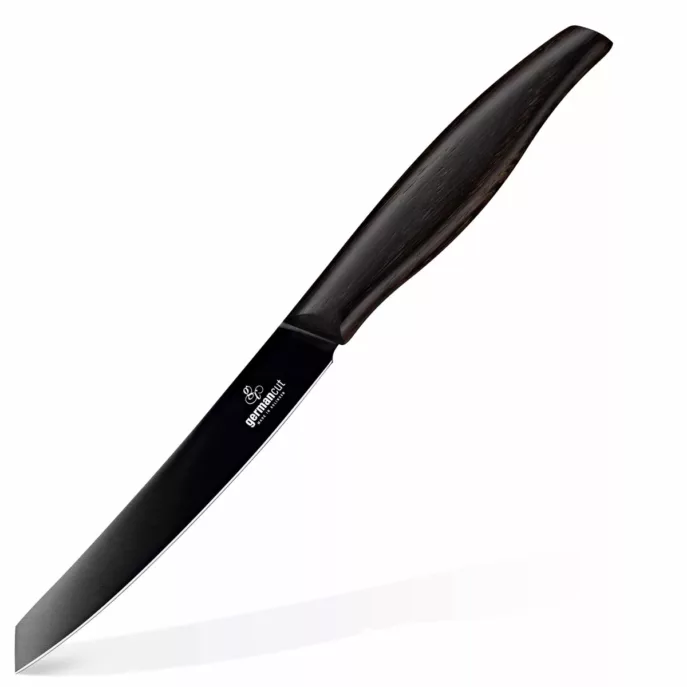Description
We developed the BREADLOVER for the love of bread. The double-sided serrated edge allows the knife, made in Solingen, to glide smoothly into the loaf of bread. It sits wonderfully in your hand so that slice after slice can be cleanly cut with little force. The integrated finger protection provides maximum safety in the process.
sharpness and durability are impressive. The design of the MEATLOVER allows for easy rocking movements, while the integrated finger protection ensures excellent safety. It is a real all-rounder in the kitchen.
IMPORTANT NOTE: As bog oak is a natural product, the discolouration varies from brownish to black.
The illustrations are only exemplary.
FAQ
- Question: What does a serrated edge sharpened on both sides mean?
A bread knife is characterised by a serrated edge because this allows the knife to cut through even hard crusts and skins – the serrated edge gets its name from the characteristic serrations on the cutting edge.
The serrated edge, sharpened on both sides, on our BREADLOVER in turn indicates a top quality bread knife – it guarantees optimal and precise cutting performance. The extra manual labour pays off because the double-sided serrated edge makes it possible to cleanly cut slices from a loaf of bread with no effort. Thanks to its special edge and its double-sided sharpening, the bread knife is also suitable for both right-handed and left-handed people.
- Question: What is bog oak, exactly?
Bog oak wood is obtained from oak trucks that have been refined by nature itself over time – it is therefore not a separate type of wood but rather very old and valuable oak wood. The oak trunks have survived for thousands of years in wild bogs before they were discovered and are now worked to form our ergonomic knife handles after a slow and careful drying process.
While the oak trunks lie hidden deep in the bog for thousands of years, the wood becomes coloured and hardened. This reaction provides the characteristic properties of the wood which set it apart and make it so valuable. The bog oak gets its intense black colour through this storage in the bog and has this to thank for its particularly refined appearance.
- Question: What is a DLC coating?
The diamond-like carbon treatment (DLC for short) is a diamond-like carbon coating and numbers among the amorphous carbon materials. It has some of the unique and characteristic properties of diamonds. The DLC coating is applied to the blades in order to further optimise their properties – for particular resistance to wear and for outstanding frictional and non-stick properties.
In addition to the increased resistance to wear, the look also benefits from the wafer-thin carbon layer because the blade becomes an unmistakeable black as a result of the surface treatment. This wonderful black knife blade stands for top quality.
- Question: Why is Sandvik 12C27 steel the perfect blade steel?
Sandvik 12C27 is the best rounded knife steel from the traditional Swedish company Sandvik, which has been setting continuously new standards in the steel industry and steel production for more than 150 years. The special Sandvik 12C27 steel stands out with its high hardness and tremendous sharpness, as well as impressing with its exceptional toughness and its outstanding edge performance and corrosion resistance. It guarantees optimal cutting performance and give the knife blade unbeatable sharpness and performance.
-
- Question: What does HRC stand for?
HRC denotes the Rockwell hardness and is the unit of measurement used to define the hardness of knife steel.
A soft blade shows signs of wear more quickly than a hard one, the wafer-thin cutting edge stays sharp for longer and has outstanding durability thanks to higher hardness. For this reason the quality of a knife is significantly dependent on the hardness of the knife steel.
Good kitchen knives – Made in Germany – are generally in the 55 to 57 HRC range. Outstanding kitchen knives, including ours, can even reach 59 HRC – this hardness is achieved by knives made from Sandvik 12C27 steel.
Made in Germany // Available only while stocks last
blade length: 26 cm
blade thickness: 3 mm
total length: 40 cm
weight: 180 g
material: Sandvik steel 12C27 (59 Rockwell)
cut: serrated cut on both sides
finishing: DLC (Diamond like Carbon) coating
handle variant: bog oak
